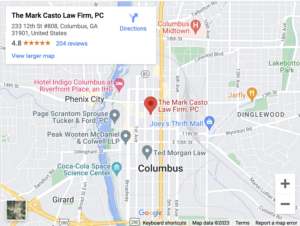
Every action we take, or don’t take, leads to an unlimited chain of cause and effect that can extend far into the future. Where would you be, for example, if your father had never worked up the nerve to ask your mother for that first date?
In personal injury law, causation typically comes into play when you need to connect a defendant’s negligence with the harm that the injury victim is complaining of. You need causation, however, even to prove an intentional tort such as a “road rage” crash.
The Two Main Types of Causation

The two main types of causation are cause in fact and proximate cause. Two other causation-related concepts are discussed below–intervening cause and superseding cause. Both of these forms of causation can be characterized as ancillary to proximate cause.
Cause in Fact
“Cause in fact” is “but-for” causation. Cause in fact is present if you can honestly say, “But for the defendant’s act or omission, the injury would not have occurred.” Proving cause in fact is not enough by itself to establish liability—you also need proximate cause (see below).
Proximate Cause
You might call proximate cause “foreseeable cause” because it is present if and only if the injury in question was a foreseeable consequence of the defendant’s misconduct. The term “foreseeable” refers to the foreseeability of a consequence to an ordinary reasonable person, not foreseeability that only an expert could discern.
A defendant whose act or omission was the “cause in fact” of your injury will still avoid liability unless their act or omission was the proximate cause of your injury. That is why your lawyer may need to focus on foreseeability and proximate cause.
The Palsgraf case
The 1928 case styled Palsgraf v. Long Island Railroad neatly illustrates the difference between cause in fact and proximate cause. In that case, a railroad guard pushed a commuter onto a train, causing them to drop a package containing fireworks. The fireworks exploded, causing the collapse of a set of scales located some distance away. This collapse injured the plaintiff, Ms. Palsgraf.
Obviously, the railroad guard’s act of pushing the commuter onto the train was the cause in fact of Ms. Palsgraf’s injury. The question in this case was whether it was the proximate cause-–in other words, whether Ms. Palsgraf’s injury was a foreseeable consequence of the railroad employee’s negligence.
The court said no. The presence or absence of proximate cause, however, is highly fact-dependent.
Intervening Cause
An intervening cause is a foreseeable or unforeseeable event, committed by a third party, that occurs after the defendant’s initial wrongful act or omission. It is not a direct result of the defendant’s wrongful act, even though it contributes to the harm suffered by the plaintiff.
An unforeseeable intervening cause can relieve the defendant of liability or at least reduce their liability. In the Palsgraf case, the explosion of fireworks was an unforeseeable intervening cause of Ms. Palsgraf’s injuries.
As another example, suppose Danny parks his truck in a manner that blocks a pedestrian walkway. This act causes a pedestrian, Phil, to walk in the street, where a bicyclist collides with him. The bicyclist’s collision with Phil is a foreseeable intervening cause that does not relieve Danny of liability. It might reduce his liability, however, based on the concept of comparative fault.
Superseding Cause
A superseding cause is a type of intervening cause. We just call it “superseding cause” once we’ve decided that it was unforeseeable. Suppose, as above, that Danny negligently blocks a public pathway with his truck. Later, a lightning bolt strikes a tree, causing it to fall and injure Phill just as he walks into the street to avoid Danny’s truck.
Although Danny’s negligence placed Jenny in the street, the act of lightning striking the tree was unforeseeable and unrelated to the blocked pathway. The lightning strike was a superseding cause that broke the chain of causation and relieves Danny of liability. Note the factual similarity with the Palsgraf case.
Hire an Experienced Columbus Personal Injury Lawyer
Causation is one of those issues that might seem obvious but can be tricky to prove. An experienced Columbus personal injury lawyer should have proven causation for their clients any number of times. Let them do the same for you.
Reach out to an experienced Columbus Personal Injury Attorney for guidance before taking any legal steps. Get in touch today with our personal injury law office, and don’t hesitate to give us a call at (706) 940-4030. We’re here to help!

